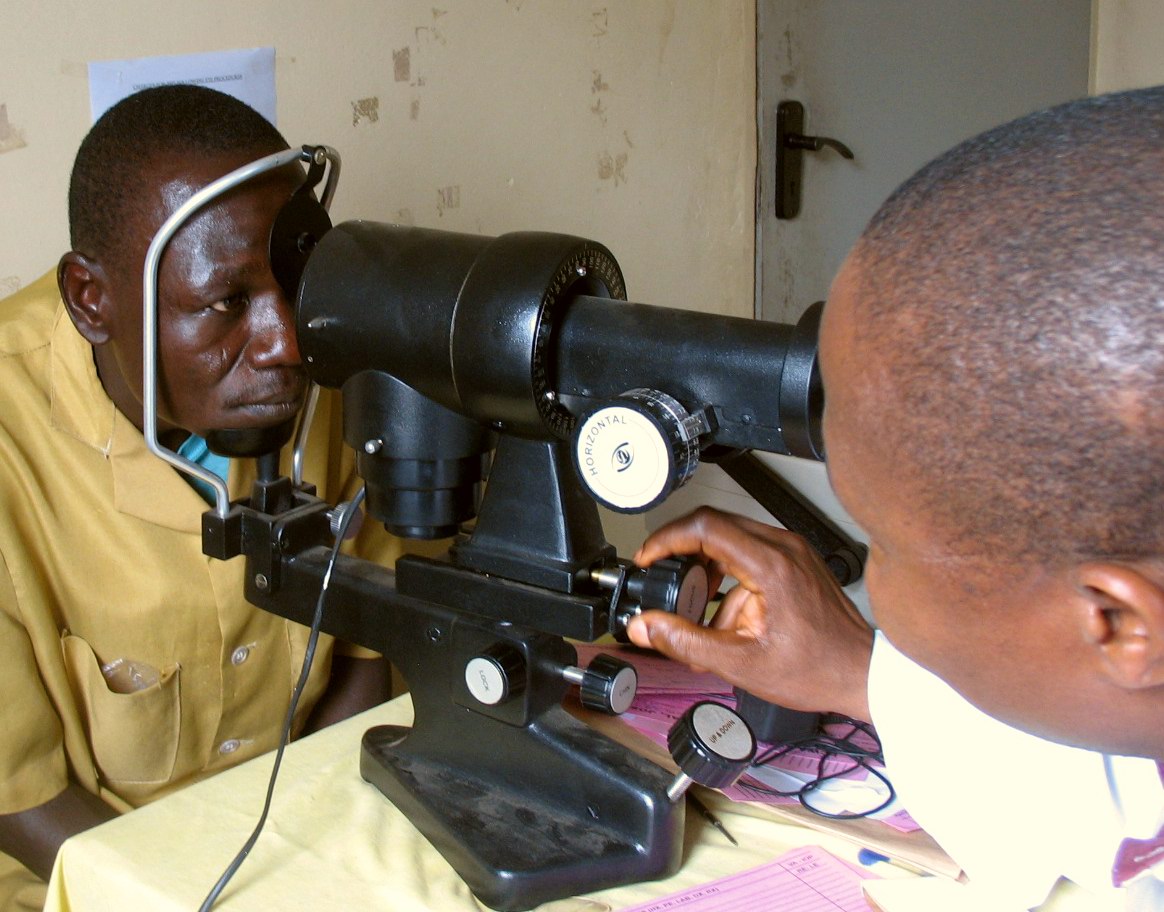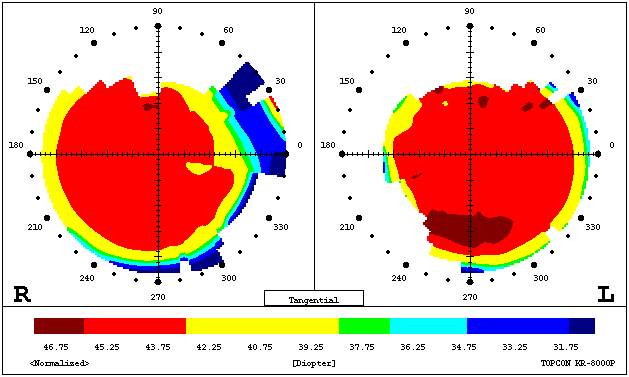Astigmatism
Last updated September 3, 2025
Medical information on this page is for educational purposes only and is not a substitute for professional medical advice, diagnosis or treatment.
See our Terms & Conditions and Consent for Telemedicine for details.




Overview
Astigmatism is a very common refractive error that makes incoming light focus at several points instead of a single sharp point on the retina, producing blurred or distorted vision at any distance. It happens because the cornea or lens is shaped more like an oval football than a round basketball, giving the eye two different curves rather than one. 1 In the United States, about one in three people has a clinically significant amount of astigmatism, and worldwide prevalence estimates range from 30 % to more than 60 %. 2 The American Academy of Ophthalmology (AAO) notes that most cases are congenital and stable, but some can develop later or progress if there is underlying corneal disease. 3
Symptoms
You may not notice mild astigmatism at first, but as the curvature mismatch increases, typical symptoms include:
- Blurry or shadowed vision at all distances
- Squinting, eyestrain, or fatigue after reading
- Headaches, especially after screen time
- Difficulty with night driving or halo-like glare around lights
Because symptoms overlap with nearsightedness and farsightedness, comprehensive eye exams are essential—especially for school-age children whose learning depends on clear vision. 4 A consumer health review confirms that uncorrected astigmatism can cause progressive eyestrain and worsening headaches over time. 5
Causes and Risk Factors
Astigmatism usually starts at birth and is linked to genetics, but research shows it can also arise from:
- Eye injury or surgery that alters corneal shape
- Progressive corneal conditions such as keratoconus
- High eyelid pressure or chronic eye rubbing (often seen in allergy sufferers)
- Premature birth and low birth weight
- Rarely, systemic diseases that affect connective tissue
The Mayo Clinic lists family history, severe nearsightedness or farsightedness, and scar-inducing infections as key risk factors. 6 Cleveland Clinic data add that astigmatism frequently co-exists with keratoconus or pellucid marginal degeneration, in which the cornea thins and bulges, worsening distortion. 7
Astigmatism Risk Estimator
Enter your details in the following fields to calculate your risk
Risk Level
Recommendation
Diagnosis
During a comprehensive exam your eye-care professional will:
- Measure visual acuity with an eye chart
- Use autorefraction and retinoscopy to estimate prescription
- Refine cylinder power and axis with a phoropter or trial lenses
- Map corneal curvature with a keratometer or corneal topographer
Keratometry in particular is quick, painless, and — according to Cleveland Clinic’s diagnostic guide — remains the frontline test for quantifying corneal astigmatism. 8 Mayo Clinic emphasizes that dilation allows a full health check of the retina and optic nerve while ensuring the most accurate refraction. 9
Treatment and Management
Most people achieve crisp vision with one of these options:
- Eyeglasses – Cylindrical lenses are ground at precise meridians to offset corneal curvature differences and are the fastest, least-invasive fix. 10
- Contact Lenses – Toric soft lenses correct up to about 5 diopters, while rigid gas-permeable (RGP) lenses neutralize higher or irregular astigmatism by creating a new refractive surface.
- Refractive Surgery – Laser procedures such as LASIK, PRK, and the newer SMILE reshape the cornea so light focuses properly. 11
- Cataract Surgery with Toric IOLs – When cataracts and astigmatism co-exist, toric intraocular lenses can correct both during a single operation.
Living with Astigmatism and Prevention
Although you can’t always prevent astigmatism, you can protect your vision by:
- Scheduling regular eye exams (every year for children, every 1–2 years for adults)
- Following the 20-20-20 rule to reduce digital eyestrain
- Wearing protective eyewear during sports or hazardous work
- Treating allergies promptly to avoid chronic eye rubbing
The AAO stresses that even mild, uncorrected astigmatism can hamper learning and depth perception; timely prescription updates keep everyday activities safe and comfortable. 12 NEI also recommends dilated exams for children under eight, when untreated refractive errors can lead to lazy eye (amblyopia). 13
Latest Research & Developments
Innovation in refractive care is moving quickly:
- SMILE Laser Surgery: The single-incision SMILE technique removes a corneal lenticule through a 2 – 3 mm tunnel, preserving biomechanics and reducing dry-eye risk. Cleveland Clinic notes it can treat up to 3 diopters of astigmatism with outcomes rivaling LASIK. 14
- Environmental Impact Studies: A 2023 longitudinal study of 127,000 Chinese youths linked long-term exposure to NO2 and PM2.5 pollution with small but measurable shifts toward astigmatism, opening new prevention conversations. 15
Of note for cataract patients, light-adjustable and extended-depth-of-focus toric IOLs continue to improve postoperative precision, with multiple trials under way.
Recently Published in Peer-Reviewed Journals
BMC Ophthalmology
July 22, 2025
Prevalence and patterns of subnormal visual acuity and refractive errors among preschool children in Sucheng district: a cross-sectional study.
Shen L, Cui Y, Zhao N, et al.
The British Journal of Ophthalmology
July 17, 2025
Prevalence and associations of spectacle adherence among school children in a multicentre Indian study.
Kuyyadiyil S, Jain E, Borah RR, et al.
BMC Ophthalmology
July 16, 2025
Effectiveness and safety of a hydrophobic aspheric monofocal intraocular lens with molding process for cataract surgery.
Liu LP, Qin YY, Lu Q, et al.
Next Steps
Best specialist to see: a cornea and refractive surgeon (or, in children, a pediatric ophthalmologist) who routinely manages astigmatism with both optical and surgical tools. Start with a comprehensive exam from an optometrist or general ophthalmologist; if irregular or high astigmatism is detected, ask for a referral to a cornea specialist. Large eye centers like Cleveland Clinic’s Cole Eye Institute offer virtual visits, making it easy to get expert opinions. 16 Academic hubs such as Mayo Clinic’s Department of Ophthalmology can coordinate second opinions or advanced surgical options if needed. 17
You can also connect directly with the right specialist through Kerbside to streamline scheduling and insurance authorization.
